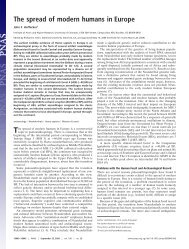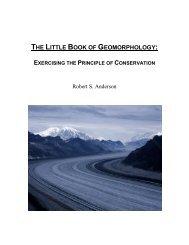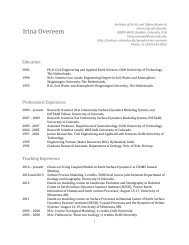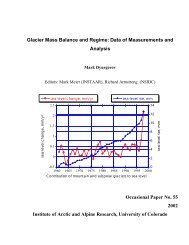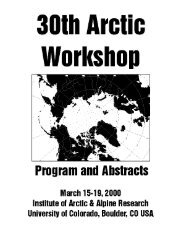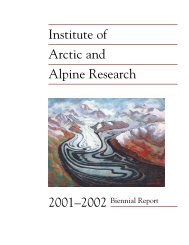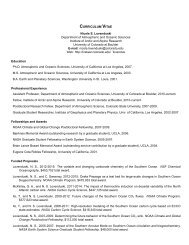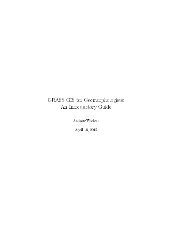Economic Feasibility Study of Colorado Anaerobic Digester Projects ...
Economic Feasibility Study of Colorado Anaerobic Digester Projects ...
Economic Feasibility Study of Colorado Anaerobic Digester Projects ...
Create successful ePaper yourself
Turn your PDF publications into a flip-book with our unique Google optimized e-Paper software.
Low Moisture<br />
Manure and<br />
Other<br />
Waste<br />
Organics<br />
High Organic Leachate<br />
High Rate<br />
<strong>Anaerobic</strong> <strong>Digester</strong><br />
Methane Gas<br />
Figure 3.1 Two-Stage <strong>Anaerobic</strong> Digestion Process<br />
B. Appropriate Volume and Mix <strong>of</strong> Feedstock: Interviews with both technology<br />
providers and producers affirmed that a consistent, chemically balanced level <strong>of</strong><br />
feedstock is necessary in order to sustain the chemical reaction required to produce<br />
bio-methane over time and to reduce AD system maintenance 2 . Several technology<br />
providers noted that volume and mix <strong>of</strong> feedstock is one <strong>of</strong> the most important factors<br />
in determining whether or not an AD project will be successful. Furthermore,<br />
technology providers noted that feedstock issues make it challenge to maintain a<br />
properly functioning digester at a single farm. One technology provider estimated<br />
that a scale <strong>of</strong> 4,000-5,000 tons <strong>of</strong> feedstock is required in order to create a<br />
sophisticated AD system with industrial controls capable <strong>of</strong> ensuring smooth<br />
operation. Stated the provider, “Single-farm based systems are not sophisticated<br />
enough to guarantee consistent operation.” Cooperatives, community digesters, and<br />
co-digestion <strong>of</strong>fer greater promise for consistent feedstock than independent, farmlevel<br />
systems, and suggestions for optimal <strong>Colorado</strong> locations have recently been<br />
identified by Stewart Environmental (2008).<br />
C. Reducing the Administrative Burden <strong>of</strong> Cogeneration: Nearly all technology<br />
providers noted that co-digestion and relationships with other industries (such as<br />
food processing facilities), are critical make projects pr<strong>of</strong>itable and ensure a<br />
consistent level <strong>of</strong> feedstock. This is particularly when an AD operator is able to<br />
collect a tipping fee from feedstock providers. Other industries can also benefit from<br />
the low odor, reduced emissions, and environmental benefits that can be facilitated<br />
2 One technology provider, reluctant to provide proprietary financial data, provided the threshold <strong>of</strong><br />
“3,500 dairy cows” as the minimum level required to justify installation <strong>of</strong> a system in the state <strong>of</strong><br />
<strong>Colorado</strong>. The technology provider estimated that feedlot levels should be a 25,000-30,000 head,<br />
considerably higher due to animal dietary needs. Another reference, the 2008 Stewart Environmental<br />
report, uses 5,000 dairy cows as an estimated threshold for pr<strong>of</strong>itability.<br />
<strong>Economic</strong> <strong>Feasibility</strong> <strong>Study</strong> <strong>of</strong> <strong>Colorado</strong> <strong>Anaerobic</strong> <strong>Digester</strong> <strong>Projects</strong><br />
Prepared by Dr. Catherine Keske, <strong>Colorado</strong> State University<br />
August 2009<br />
Page 16 <strong>of</strong> 79



